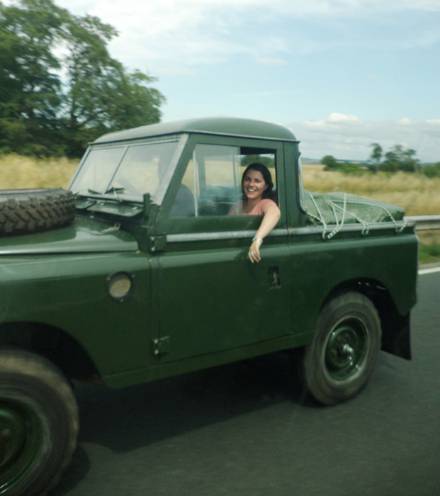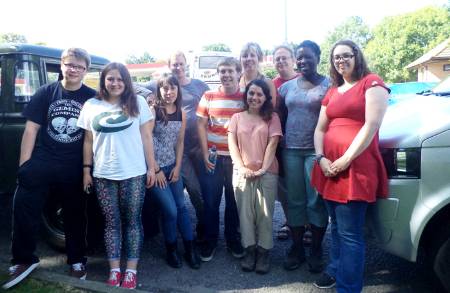A team of Museum scientists and volunteers visited Slapton Ley Nature Reserve between 21-25 July to sample invertebrates from a variety of habitats. Volunteer Rachel Clark reports back on their first day in the field.
Our first day of fieldwork mainly focused on a range of microhabitats in Slapton Woods, which is a short 10 minute walk from our base camp (Start Bay Centre).
Slapton Woods is ancient woodland located on the edge of Slapton Ley Nature Reserve, inland from the lake and the sea. The woodland has been around so long that is it is mentioned in the Domesday Book. Before the Field Studies Council (FSC) started to maintain the woodland (which they do only for public safety), it was largely unmanaged.
 And so our first day of collecting started, deep in the amazing ancient woodland of Slapton Woods.
And so our first day of collecting started, deep in the amazing ancient woodland of Slapton Woods.
Now personally at this moment I felt like I was walking in the footsteps of great biologists such as Alfred Russel Wallace, Charles Darwin, and Henry Walter Bates... there are so many! I was so excited I could have danced through the woods. Raring to go with my backpack, pooter (that’s a suction device) and net, I caught up with everyone and we began to sample.
Working with creepy crawlies of the soil
Now this is an area which I know a lot more about, the sampling of invertebrates in the leaf litter and soil. Before we had a chance to get our bearings in the woods, Miranda, Georgie, Beau and myself got to work on some rotting logs.
 Beau searching under some rotting logs for some good specimens for us to collect.
Beau searching under some rotting logs for some good specimens for us to collect.
We were looking for groups like isopods (woodlice) and myriapods (centipedes and millipedes). This is done by opening up the rotting wood to expose the species which have burrowed into the wood.
It's all about the unknown - Malaise traps and yellow pan traps
So today, after a good few years sorting Malaise trap specimens in the Museum’s Soil Biodiversity lab, I finally got to see how Malaise traps work, which for me was really useful, as it means I can understand how the specimens were collected.
Thomas putting the final peg in the Malaise trap, a device that captures winged insects.
Malaise traps collect species of insects which fly such as Diptera (flies) and Hymenoptera (bees and wasps). They work by allowing the insects to fly under a tented area. They hit the netting that runs down the middle of the trap and then fall to the floor or hang on the netting. All winged insects after falling to the floor want to fly or climb upwards The Malaise trap directs them up towards the highest point where there is a funnel leading into to a pot containing ethanol – which quickly kills them.
We will be keeping our Malaise traps up until Thursday evening, when we will take them down and hopefully have an amazing bounty which will take very many hours to sort to order (Diptera, Hymenoptera etc).
What we did after we finished sampling for the day
After all the excitement and seriousness of sampling in the heat all day, we all have to find a way to relax and unwind… my personal favourite for celebrating a first successful day of sampling is to jump into the sea… fully clothed!
 Going, going, gone! Running in to the clear beautiful sea at Slapton Beach… yes, fully clothed!
Going, going, gone! Running in to the clear beautiful sea at Slapton Beach… yes, fully clothed!
 Georgie enjoying the entertainment and me having a relaxing moment floating in the warm sea.
Georgie enjoying the entertainment and me having a relaxing moment floating in the warm sea.
Moth traps and sweep net collecting in the next blog piece, so stay tuned.
Thanks for reading!
Rachel









